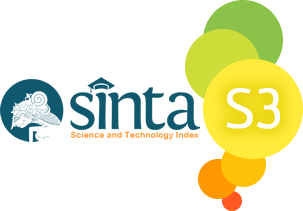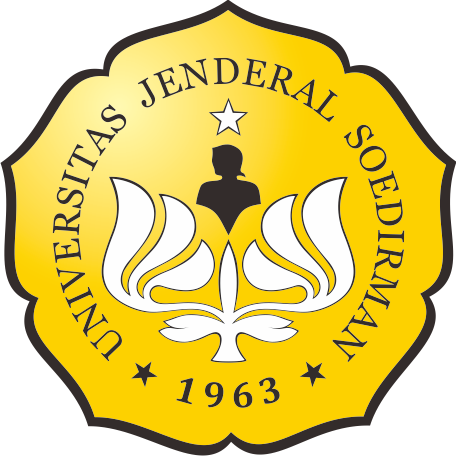ISOLASI DAN KARAKTERISASI JAMUR LIGNINOLITIK SERTA PERBANDINGAN KEMAMPUANNYA DALAM BIODELIGNIFIKASI
Abstract
Fungi can survive in various environments with different media including wood. Lignin in timber is hard to be degraded and hydrolyzed efficiently because of its polymer form, composite and complex structure. Ligninolytic fungi produce an extracellular enzyme to withstand with toxic or mutagenic chemicals exposure and known to degrade different types of pollutant compounds. Lignin decomposers were also known to play a significant role in the pulping process of paper mills, used in waste treatment such as textile and hydrocarbon wastes. This study was conducted to obtain fungal isolates that have delignification capability and to compare the ability of fungal isolates in degrading lignin. Isolates were from rotten wood and soil using selective lignin medium with tannic acid as sole C source. This study characterized the isolates by their morphology and identified them using Morphology and Taxonomy of Fungi book by Bessey (1950). The ligninolytic capability comparison was conducted by measuring the transparent zone formed on selective lignin media. This research found 14 isolates of fungi and all of them had the ligninolytic capability. Aspergillus niger isolate has the highest ligninolytic capability by producing 6.45 cm clear zone diameter on the 7th day of incubation. Aureobasidium sp. has the smallest clear zone diameter of 1.9 cm within the same period.
Keywords
Full Text:
PDFReferences
Abdulla HM. 2007. Enhancement of Rice Straw Composting by Lignocellulolytic Actinomycetes Strains. Int.J. of Agriculture & Biology. Vol. 9(1):106–109.
Adlini NI. 2014. Seleksi Mikroba Selulolitik dalam Mendegradasi Lignin Asal Tanah Gambut Desa Rimbo Panjang Kampar Riau. [Skripsi]. Jurusan Biologi. Fakultas Matematika dan Ilmu Pengetahuan Alam. Universitas Riau.
Artiningsih T. 2006., Aktivitas Ligninolitik Jenis Ganoderma pada Berbagai Sumnber Karbon. Jurnal Biodiversitas, Vol 7, No 4:307–311. Balai Penelitian Mikrobiologi, Pusat Penelitian Biologi, Lembaga Ilmu Pengetahuan Indonesia (LIPI), Bogor https://doi.org/10.13057/biodiv/d070402
Berts WB, Dart RK. 1998. The degradation of lignin-related compounds by Aspergillus flavus. Journal of General. Microbiol. 134: 2413-2420.
Bessey EA. 1950. Morphology and Taxonomy of Fungi (1st ed). New Delhi: Vikas Publishing House PVT Ltd. https://doi.org/10.5962/bhl.title.5663
Dey S, Maiti TK, Bhattacharyya BC. 1994. Production of extracellular enzymes by a lignin peroxsidase-producing brown rot fungus, Polyporus ostreiformis, and its comparative abilities for lignin degradation and dye decolorization. Applied and Environmental Microbiology, 60 : 4216-4218.
Fengel D, Wegener G. 1989. Kayu : Kimia, Ultrastruktur, Reaksi-reaksi. [Terjemahan]. Jogjakarta : H. Sastrohamidjojo. Gadjah Mada University Press.
Hawksworth DL, Kirk PM, Sutton BC, Pelger DN. 1995. Ainsworth and Bisby's Dictionary of Fungi.
Howard RL, Abotsi EJ, van Rensburg EL, Howard S. 2003. Lignocellulose biotechnology: issue of bioconservation and enzyme production. African Journal of Biotechnology, 2: 602-619. https://doi.org/10.5897/AJB2003.000-1115
Klamer M, Baath E. 1998. Microbial community dynamics during compositing of straw material studied using phospholipid fatty acid analysis. FEMS Microbiol. Ecol. 27: 9-20. https://doi.org/10.1111/j.1574-6941.1998.tb00521.x
Lakshmikant. 1990. Cellulose degradation and cellulose activity of five cellulolytic fungi. World J Microbiol Biotechnol 6 (1): 64-66. https://doi.org/10.1007/BF01225357
Moreira MT, Viacava C, Vidal G. 2004. Fed-batch decolorization of poly R-478 by Trametes versicolor. Brazilian Archives of biology and technology 47(2), 179-183. https://doi.org/10.1590/S1516-89132004000200003
Orth AB, Royse DJ, Tien M. 1994. Ubiquity of lignin peroxidase among various wood-degradation fungi. Applied and Environmental Microbiology, 59(12): 4017-4023.
Parthasarathi R, Romero RA, Redondo A, Gnanakaran S. 2011. Theoretical Study of The Remarkably Diverse Lingkages in Lignin. The Journal of Physical Chemistry Letters, 2: 2660-2666. https://doi.org/10.1021/jz201201q
Pollegioni L, Tonin F, Rosini E. 2015. Lignin-degrading Enzymes. [Internet].[cited 18 August 2017]. Available from : https://www.ncbi.nlm.nih.gov/pubmed/25649492.
Roy BP, Archibald F. 1993. Effect of kraft pulp and lignin on Trametes versicolor carbon metabolism. Appl. Environ. Microbiol. 59:1855-1863.
Sadhasivams S, Savitha S, Swaminathan K, Lin FH. 2008. Production, purification and characterization of mid-redox potential laccase from a newly isolated Trichoderma harzanium WL1. Process Biochemistry 43, 736-742. https://doi.org/10.1016/j.procbio.2008.02.017
Schlegel HS, Schmidt K. 1984. Mikrobiologi Umum. Ed. Ke 6. Terjemahan Tedjo Baskoro. Gadjah Mada University Press, Jogjakarta
Silawati, O. 2013. Pembuatan Slide Culture [Internet].[cited 25 May 2017]. Available from : https://www.scribd.com/doc/191394145/SLIDE-KULTUR-docx.
Steffen KT. 2003. Degradation of recalcitrant biopolymers and polycycic aromatic hydrocarbons by litter decomposing basidiomycetous fungi. [Desertasi]. Helsinki : Division of Microbiology Viikki Biocenter, university of Helsinki.
Subowo YB, Corazon. 2010. Seleksi Jamur Tanah Pengurai Lignin dan PAH dari Beberapa Lingkungan di Bali. Jurnal Berita Biologi 10(2). Bidang Mikrobiologi, Pusat Penelitian Biologi, Lembaga Ilmu Pengetahuan Indonesia (LIPI), Bogor.
Subowo YB. 2015. Pengujian aktifitas jamur Penicillium sp. R7,5 dan Aspergillus niger NK pada media tumbuh untuk mendukung pertumbuhan tanaman padi di lahan salin. Jurnal PROS SEM NAS MASY BIODIV INDOS, Vol 1, No 5. Bidang Mikrobiologi, Pusat Penelitian Biologi, Lembaga Ilmu Pengetahuan Indonesia (LIPI), Bogor
Subowo YB. 2009. Isolasi dan Seleksi Jamur Aphyllophorales Pengurai Lignin di Hutan Bukit Bangkirai, Kalimantan Timur. Jurnal Berita Biologi, Vol 9, No 6. Bidang Mikrobiologi, Pusat Penelitian Biologi, Lembaga Ilmu Pengetahuan Indonesia (LIPI), Bogor.
Tien M, Kirk TK. 1983. Lignin degrading enzyme from hymenomycete Phanerochaete chrysosporium burds. Science. 221:661-663. https://doi.org/10.1126/science.221.4611.661
Vanholme R, Demedts B, Morreel K, Ralph J, Boerjan W. 2010. Lignin Biosynthesis and Structure. [Internet].[cited 18 August 2017]. Available from : www.plantphysiol.org/content/153/3/895.
Yang JS, Yuan HL, Wang HX and Chen WX. 2005. Purification and characterization of lignin peroxidases from Penicillium decumbens P6. World Journal of Microbiology & Biotechnology 21, 435-440. https://doi.org/10.1007/s11274-004-1876-2
Yuleli. 2009. Penggunaan Beberapa Jenis Fungi untuk Meningkatkan Pertumbuhan Tanaman Karet (Hevea brasiliensis) di Tanah Gambut. [Tesis]. Universitas Sumatera Utara, Sekolah Pascasarjana. Program Studi Biologi.
Article Reads
Total: 16132 Abstract: 3824 PDF: 12308Refbacks
- There are currently no refbacks.

This work is licensed under a Creative Commons Attribution-ShareAlike 4.0 International License.
This website is maintained by:
Bio Publisher
The Faculty of Biology Publishing
Faculty of Biology
Universitas Jenderal Soedirman
Jalan dr. Suparno 63 Grendeng
Purwokerto 53122
Telephone: +62-281-625865
Email: biologi@unsoed.ac.id
T his website uses:
OJS | Open Journal System
A free journal management and publishing system that has been developed by the PKP (Public Knowledge Project) version 2.4.8.0.
All article content metadata are registered to:
Crossref
An official nonprofit Registration Agency of the International Digital Object Identifier (DOI) Foundation.
Articles in this journal are indexed by:









